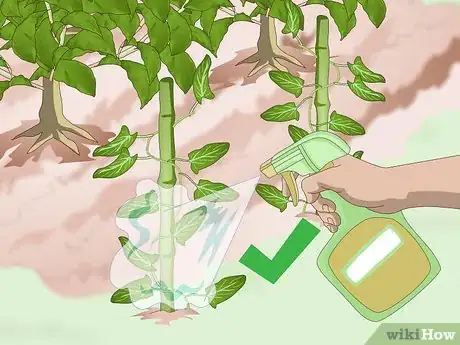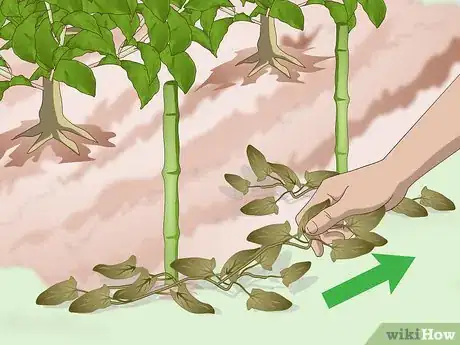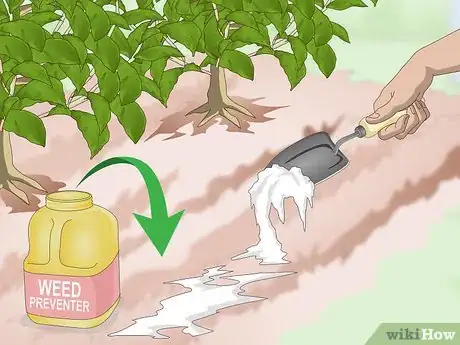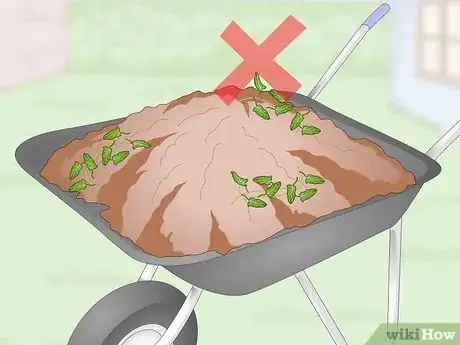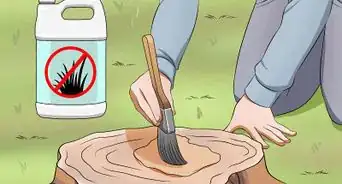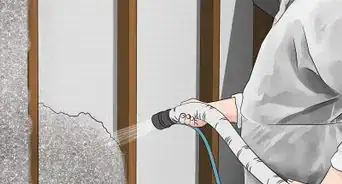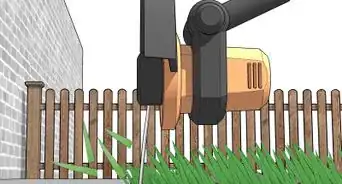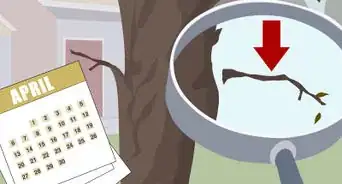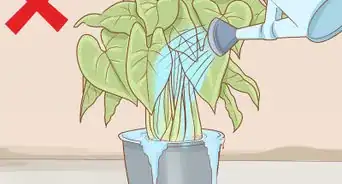This article was co-authored by Lauren Kurtz and by wikiHow staff writer, Sophia Latorre. Lauren Kurtz is a Naturalist and Horticultural Specialist. Lauren has worked for Aurora, Colorado managing the Water-Wise Garden at Aurora Municipal Center for the Water Conservation Department. She earned a BA in Environmental and Sustainability Studies from Western Michigan University in 2014.
This article has been viewed 147,223 times.
Bindweed looks innocent enough at first with it’s large, pretty blooms, but it can quickly invade your yard and weaken your plants, shrubs, and even trees. Fortunately, even though bindweed is stubborn, it’s not invincible. Taking the right steps will help you remove it from your garden and prevent it from ever coming back.
Steps
Removing Bindweed
-
1Pull out small patches of bindweed. If the bindweed is growing around the borders of your garden or in small groupings, you can pull it out. Use a pitchfork to gently turn over the dirt or soil underneath the plant so you can pull out the roots, which can grow to 10 ft (3.0 m) deep. It’s important that you remove the roots to discourage new shoots from growing. Dispose of both the roots and the plant immediately in the trash.[1]
- If you can’t dig out the roots because of other plants nearby, use a hoe to cut off the bindweed at ground level. Repeat the process as new growth appears.
- It's best to dispose of it in the trash. If you compost the bindweed, it could spread to your compost bin.
-
2Wrap the bindweed around bamboo canes to isolate it. At the beginning of the growing season, stake bamboo canes around your yard. Then, twine the bindweed so that it grows around the bamboo canes rather than climbing up your walls or spreading across your garden. This will allow you to spray weedkiller on the bindweed without harming your other plants.[2]Advertisement
-
3Apply weedkiller to isolated patches. If the bindweed is well away from other plants, or has wound its way around the bamboo canes, the best way to get rid of it is to use glyphosate weedkiller, like Roundup. Liberally spray the plants, especially where the roots come up from the ground, then allow the weedkiller to soak into the root system. Use 2 or 3 applications in a single growing season to ensure the bindweed will be destroyed.[3]
- Please note: The WHO considers glyphosate to be a probable human carcinogen. Its use is prohibited in some states and countries. Please check with your local laws and use caution if handling this chemical.
- Glyphosate weedkiller will destroy other plants, like flowers and vegetables, so be sure to spray it only on the bindweed.
- Glyphosate weedkiller can be found at garden centers and superstores and also comes in a gel that you can paint on individual leaves.
-
4Let the plants die to ground level before pulling them out. If you’ve treated the bindweed with glyphosate or another weedkiller, wait about 3 weeks before removing the plants. This gives the chemicals a chance to penetrate the roots and allows the bindweed to die down to ground level, making it easier to remove. Don’t forget to dig up the roots as well.[4]
-
5Treat affected soil with weed preventer. To prevent bindweed seeds from spreading, spray a weed preventer, like Preen, on the soil. You can treat soil where you’ve removed bindweed already as well as soil beneath existing plants. Repeat the application every 3 to 4 months to ensure the bindweed doesn’t grow back.[5]
-
6Put down a heavy layer of mulch to discourage new growth. Even though you may have removed all the visible bindweed, any leftover seeds or roots can begin another infestation. Lay down several inches of bark, wood chips, or another heavy mulch to prevent sunlight from reaching the remnants of bindweed.
Preventing Bindweed Takeovers
-
1Avoid purchasing soil, seed, hay, or animal feed containing bindweed. Seeds, buds, or pieces of bindweed roots could be present in a variety of soil, seed, hay, or feed mixes. Check the ingredient list before purchasing these products to ensure you don’t inadvertently introduce bindweed into your lawn or garden.[6]
-
2Pull bindweed weekly. The best way to keep bindweed from getting out of control is to pull it out as soon as you see it. Young shoots are much easier to get rid of than established vines. Take time each week to scour your garden for bindweed. Carefully dig out the roots and the plant from the soil and dispose of them.[7]
-
3Ensure your soil is healthy. Bindweed flourishes when the soil is out of balance, has pH issues, and/or has high levels of magnesium and potassium. Add humus materials (like decayed plant matter), calcium, and phosphorous to your soil to amend it. Adjust the soil pH so that it fits into the recommended range based on the vegetation you are growing.[8]
Community Q&A
-
QuestionIs bindweed harmful when it goes grey?
 NinoxTop AnswererNo. The color of the leaves can change during the year, but it is absolutely normal.
NinoxTop AnswererNo. The color of the leaves can change during the year, but it is absolutely normal. -
QuestionHow do I deal with bindweed in a hedge?
 NinoxTop AnswererThe only efficient way to get rid of this is to often remove the stems and the roots.
NinoxTop AnswererThe only efficient way to get rid of this is to often remove the stems and the roots. -
QuestionThe bindweed has runners along the surface and under the gravel. Should I just pull out these runners?
 NinoxTop AnswererYes, definitely. If you leave the runners in place, they will produce new plants.
NinoxTop AnswererYes, definitely. If you leave the runners in place, they will produce new plants.
References
- ↑ https://www.rhs.org.uk/advice/profile?PID=241
- ↑ http://www.independent.co.uk/property/gardening/nice-day-for-a-white-weeding-how-to-get-rid-of-bindweed-2317555.html
- ↑ https://www.gardenseeker.co.uk/weeds/bindweed_and_bellbind.htm
- ↑ https://www.gardenseeker.co.uk/weeds/bindweed_and_bellbind.htm
- ↑ http://www.southernliving.com/garden/grumpy-gardener/10-awful-weeds-and-how-to-kill-them
- ↑ http://www.underwoodgardens.com/slide-gardening-tips-and-trickscontrolling-bindweed-in-the-garden/
- ↑ https://www.gardenseeker.co.uk/weeds/bindweed_and_bellbind.htm
- ↑ http://www.underwoodgardens.com/slide-gardening-tips-and-trickscontrolling-bindweed-in-the-garden/
About This Article
To get rid of bindweed, use a pitchfork to gently turn over the soil underneath the plants and pull them out by hand. Try to pull the whole root out, which can grow as deep as 10 feet, to prevent new shoots from growing. Alternatively, plant bamboo canes at the beginning of growing season. Then, twine the bindweeds so they grow around the bamboo canes instead of spreading across your garden. Once you’ve isolated the bindweed from the rest of your garden, spray the plants with weed killer to destroy them. Make sure you wait about 3 weeks before removing the plants so the weed killer can soak into the roots and stop them growing back. For more tips from our Gardening co-author, including how to prevent new bindweeds growing, read on!


